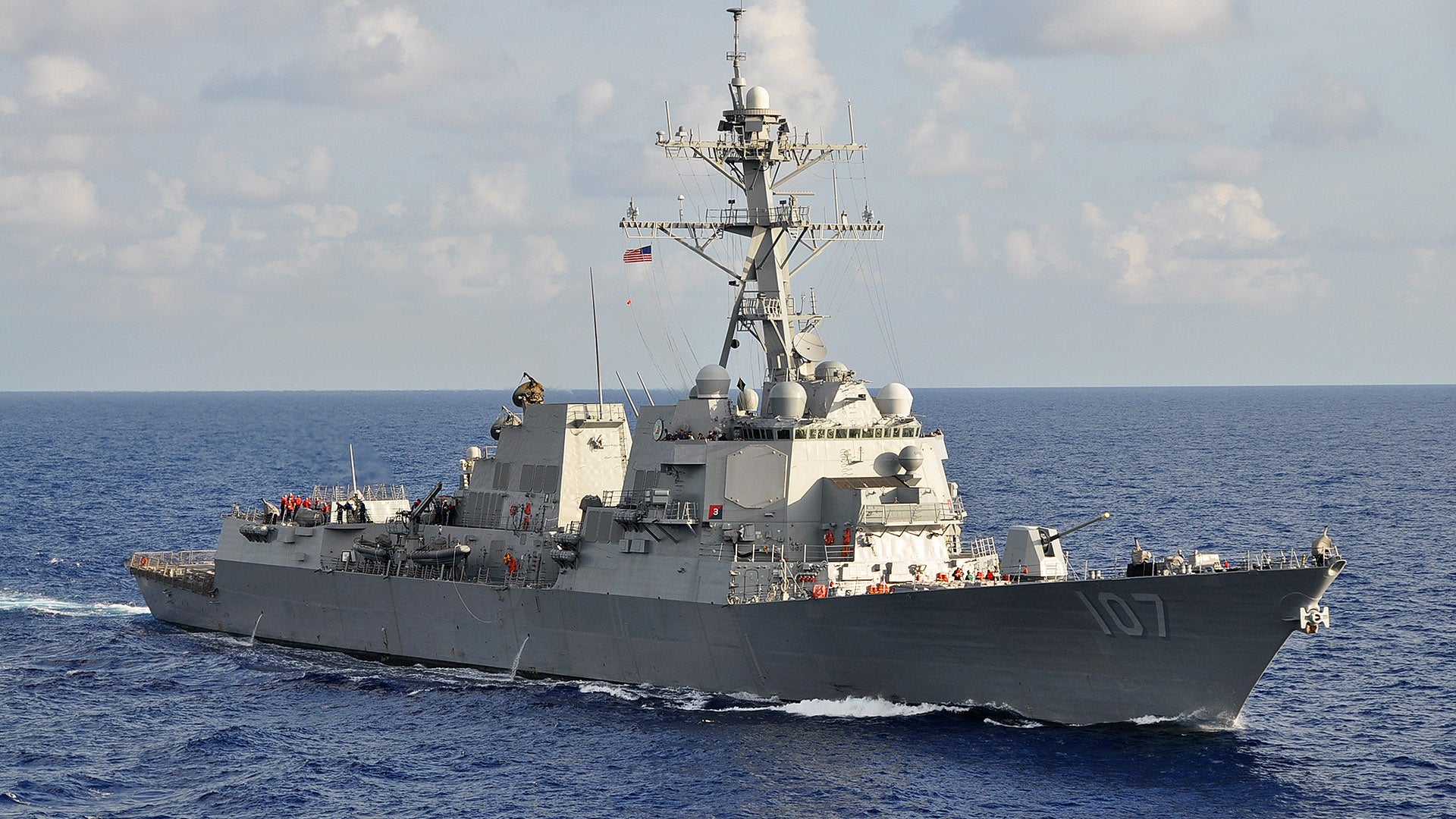Yesterday, Russia protested what it called a “dangerous act” executed by the US Navy in the Eastern Mediterranean, releasing a video clip that appeared to show the USS Gravely pulling alongside and then cutting across the Russian frigate’s path. Now, the other side of the story is emerging, and there seems to be more to it than just what that video clip showed, and what the Russians are claiming.
The whole encounter lasted over and hour, according to Defense News. The ordeal began as the Gravely was escorting the USS Harry S. Truman during normal operations, with the Russian frigate shadowing them from a distance. Then the frigate began maneuvering towards the carrier, eventually getting so close that its presence affected the big flattop’s ability to maneuver. Carriers have to be pointed into the wind when conducting flight operations; as such, containing their movements can severely disrupt flight operations, and even endanger aircrews under certain circumstances.
The Gravely broke from formation with the carrier and attempted to put herself between the now much closer Yaroslav Mudry and the Truman. It’s at that point that the Russians apparently used a bit of guile in an attempt to continue to disrupt the carrier’s operation and draw the destroyer closer. Defense News’s source familiar with the encounter describes it in detail:
“The interaction was assessed as unprofessional because 777 (the Yaroslav Mudry’s hull number) displayed an international signal for being restricted in her ability maneuver, but then freely maneuvered in both course and speed as Gravely changed course and speed… This demonstrates that 777 was not restricted in their ability to maneuver.”

The defense official continues: “777 had raised day shapes ‘ball-diamond-ball,’ which is the international signal a ship displays when restricted in her ability to maneuver, when she took position two nautical miles off Gravely’s starboard quarter. Then, 777 repeatedly asked Gravely over VHF radio to maintain ‘a safe distance, while 777 continued to maneuver to get closer to Gravely… As Gravely changed course and speed, 777 also changed course and speed. The maneuvering demonstrates that 777 was not in fact restricted in her ability to maneuver, and was thus intentionally displaying a false international signal… Gravely assessed that 777 was intentionally trying to interfere with Harry S. Truman operations.”
According to the source, the incident marks the closest a Russian naval vessel has come to a carrier or a destroyer operating in the Mediterranean Sea in recent memory.
If the official’s report is accurate, it seems as if the Russian frigate drew the Gravely in to a certain degree, and does paint the video released by Russia in a different light. Whether it was just an attempt to poke US naval forces operating off of Syria, or a planned attempt to capture some “hey, they harass us too!” footage for propaganda purposes, remains unclear.
The Eisenhower Carrier Strike Group has recently taken over air strike operations against ISIS from the eastern Mediterranean, allowing the Truman Carrier Strike Group to finally begin its voyage home after an extended combat cruise.

Contact the author Tyler@thedrive.com
